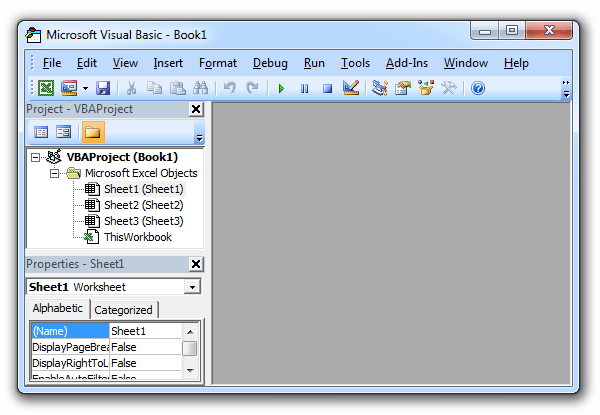

Though at first sight the VBA editing window is less straightforward than the standard worksheet Excel user-interface, in comparison it offers a nearly unlimited level of flexibility and much greater calculation power. A note on the appearance of different versionsĮxcel Visual Basic for Applications (VBA) is the programming language embedded in Microsoft Excel that can be used to make sophisticated workbooks or even user-defined applications.How to get Excel VBA to work in your Microsoft Office version in case it doesn't do so already.What prior knowledge you are expected to have when starting the tutorial.This chapter provides a high-level description of: The following VBA code snippet can be set as a Button event to open the VBA Project Window: Sub OpenVBE_Click()Ī: How to get started Goal of this chapter May sound weird but it is actually a pretty neat trick. Tip 1: Open the VBE (Visual Basic Editor) with VBA

THe VBE Code Window allows you to edit your VBA code – by selecting a VBA Module, Classes or Form in the VBE Project Window (see above). The VBE Project Windows allows you to manage your VBA Project objects such as VBA Modules, Classes and Forms. This will open the Visual Basic editor as shown below: The Visual Basic Editor (VBE) The VBE Project Window You should now see a new tab in your Excel ribbon called Developer as shown below: Click the Visual Basic button on the Developer ribbon Next select the Developer tab to add it to the Excel ribbon as shown below:Ĭlick Ok. Did you know… you can use the ALT+ F11 keyboard shortcut to open the Visual Basic Editor (VBE) window? Add the Developer tab to your Excel ribbon


 0 kommentar(er)
0 kommentar(er)
